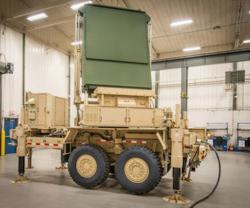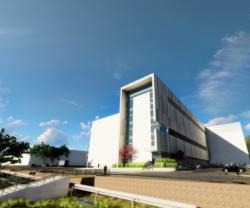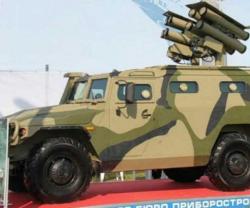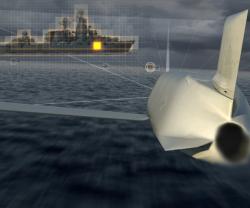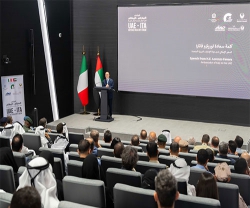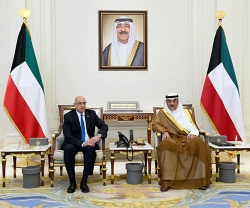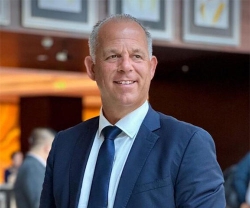Combat King Reigns in The Sky
19.11.2012 North America
An HC-130J Combat King II takes off for Davis-Monthan Air Force Base, Arizona from Lockheed Martin facilities in Marietta, Georgia on 15 November.
Aircraft number 5707 is the third of 15 HC-130Js to be delivered to the U.S. Air Force’s Air Combat Command.
The HC-130J replaces HC-130P/Ns as the only dedicated fixed-wing Personnel Recovery platform in the Air Force inventory. It is an extended-range version of the C-130J Hercules transport.
Its mission is to rapidly deploy to execute combatant commander directed recovery operations to austere airfields and denied territory for expeditionary, all weather personnel recovery operations to include airdrop, airland, helicopter air-to-air refueling, and forward area ground refueling missions.
When tasked, the aircraft also conducts humanitarian assistance operations, disaster response, security cooperation/aviation advisory, emergency aeromedical evacuation, and noncombatant evacuation operations.
Modifications to the HC-130J have improved navigation, threat detection and countermeasures systems. The aircraft fleet has a fully-integrated inertial navigation and global positioning systems, and night vision goggle, or NVG, compatible interior and exterior lighting. It also has forward-looking infrared, radar and missile warning receivers, chaff and flare dispensers, satellite and data-burst communications, and the ability to receive fuel inflight via a Universal Aerial Refueling Receptacle Slipway Installation (UARRSI).
The HC-130J can fly in the day; however, crews normally fly night at low to medium altitude levels in contested or sensitive environments, both over land or overwater. Crews use NVGs for tactical flight profiles to avoid detection to accomplish covert infiltration/exfiltration and transload operations. To enhance the probability of mission success and survivability near populated areas, crews employ tactics that include incorporating no external lighting or communications, and avoiding radar and weapons detection.
Drop zone objectives are done via personnel drops and equipment drops. Rescue bundles include illumination flares, marker smokes and rescue kits. Helicopter air-to-air refueling can be conducted at night, with blacked out communication with up to two simultaneous helicopters. Additionally, forward area refueling point operations can be executed to support a variety of joint and coalition partners.
Aircraft number 5707 is the third of 15 HC-130Js to be delivered to the U.S. Air Force’s Air Combat Command.
The HC-130J replaces HC-130P/Ns as the only dedicated fixed-wing Personnel Recovery platform in the Air Force inventory. It is an extended-range version of the C-130J Hercules transport.
Its mission is to rapidly deploy to execute combatant commander directed recovery operations to austere airfields and denied territory for expeditionary, all weather personnel recovery operations to include airdrop, airland, helicopter air-to-air refueling, and forward area ground refueling missions.
When tasked, the aircraft also conducts humanitarian assistance operations, disaster response, security cooperation/aviation advisory, emergency aeromedical evacuation, and noncombatant evacuation operations.
Modifications to the HC-130J have improved navigation, threat detection and countermeasures systems. The aircraft fleet has a fully-integrated inertial navigation and global positioning systems, and night vision goggle, or NVG, compatible interior and exterior lighting. It also has forward-looking infrared, radar and missile warning receivers, chaff and flare dispensers, satellite and data-burst communications, and the ability to receive fuel inflight via a Universal Aerial Refueling Receptacle Slipway Installation (UARRSI).
The HC-130J can fly in the day; however, crews normally fly night at low to medium altitude levels in contested or sensitive environments, both over land or overwater. Crews use NVGs for tactical flight profiles to avoid detection to accomplish covert infiltration/exfiltration and transload operations. To enhance the probability of mission success and survivability near populated areas, crews employ tactics that include incorporating no external lighting or communications, and avoiding radar and weapons detection.
Drop zone objectives are done via personnel drops and equipment drops. Rescue bundles include illumination flares, marker smokes and rescue kits. Helicopter air-to-air refueling can be conducted at night, with blacked out communication with up to two simultaneous helicopters. Additionally, forward area refueling point operations can be executed to support a variety of joint and coalition partners.
Previous PostRaytheon, USAF Test New GBSSA & STARS System
Latest news
Latest events
Intersec Saudi Arabia
29 Sep - 01 Oct 2025Riyadh International Exhibition & Convention Centre - Saudi ArabiaDubai International Air Chiefs’ Conference (DIACC 2025)
16 Nov 2025Atlantis, The Palm Dubai - United Arab EmiratesDubai Airshow
17 - 21 Nov 2025Dubai World Central (DWC) - United Arab EmiratesEgypt Defence Expo (EDEX)
01 - 04 Dec 2025Egypt International Exhibition Center New Cairo - Egypt


